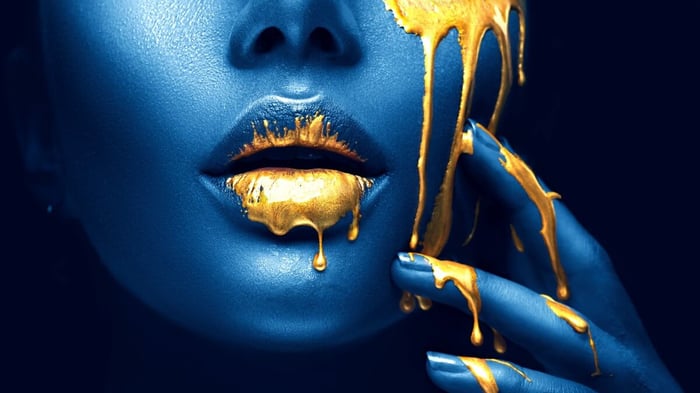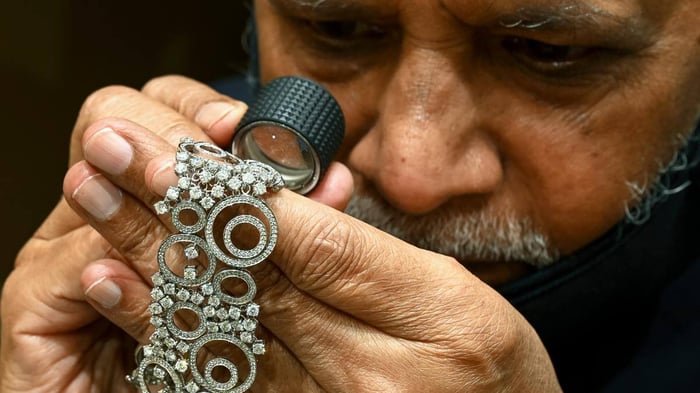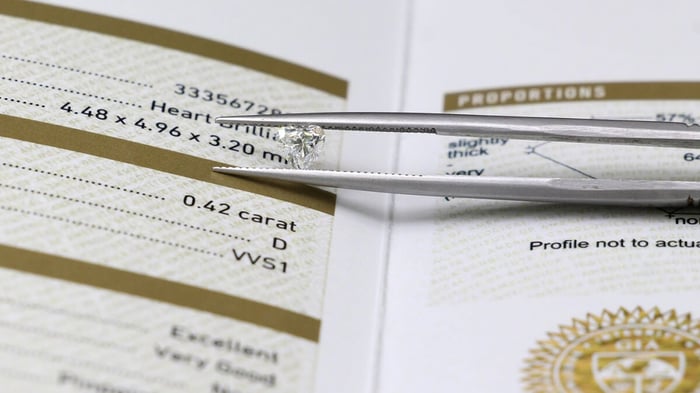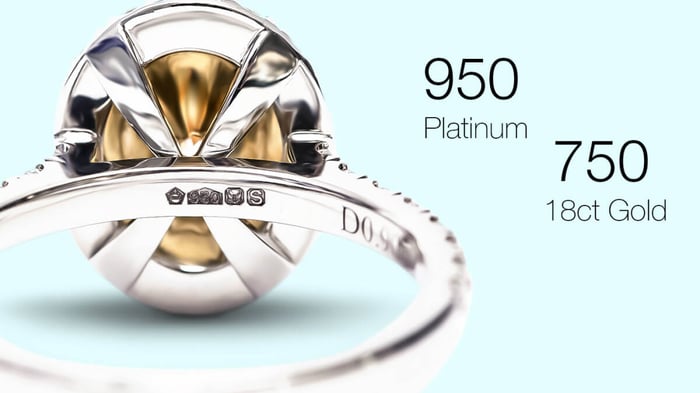Everything You Need To Know About Gold Types And Colours
Gold is a precious metal that, along with platinum and silver, is often used in jewellery. There are several different types of gold used in the manufacture of jewellery. The gold types and colours you choose depend on your budget, the type and quality of the piece and the designer's preferences about colour.
What Is Gold?
Gold is a chemical element; that is, it contains only one kind of atom. Unlike a compound, it can't be split into different components. Gold's chemical symbol is Au. Gold is a ductile metal, meaning that it can be stretched into very fine wires or very thin sheets without losing its strength. This property makes gold relatively easy to work into complex shapes without losing its properties.
When it comes to appearance, gold is unusual in that its natural colour is yellow. Most pure metals are grey, silvery-white or silver, making gold unusual but not unique. Gold is considered a strong metal; however it is easy to alter its shape when it receives an impact, it is quite soft. This property makes it ideal for jewellery as it can easily be worked; however, items made of pure gold are not very durable. Care must be taken when wearing them.
0.25ct Blue Sapphire 0.12ct Diamond Five Stone Ring 18k Yellow Gold
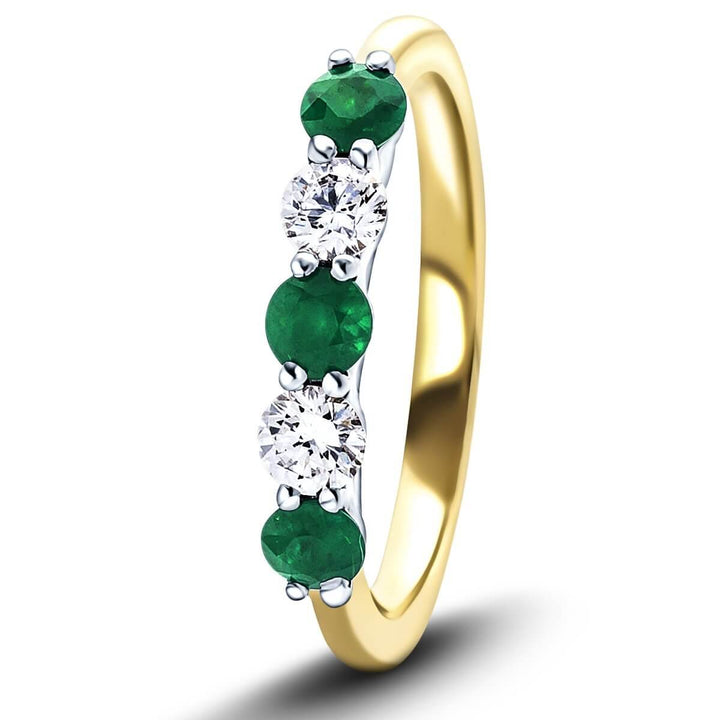
$858.00
$1,206.00
With the right amount of sparkle and style, this elegant five-stone ring has all the right ingredients for impressive style. A high-quality 18k yellow gold band has been handcrafted to perfection with a union of three different precious stones to… read more
What Are Gold Karats?
Karats are a form of measure of purity and are not equivalent to carats used to measure the weight of diamonds and some other precious gemstones. Gold is defined by its purity, a ratio that is divided into 24 parts. Pure gold is 100% gold has a ratio of 24 karats or 24K, meaning that all 24 parts of the ratio are gold. Pure 24K gold, while completely pure, is too soft to be used in jewellery. The softness makes it prone to bending and denting, which are not desired by jewellers or wearers of jewellery.
The most commonly found purities of gold in high-quality jewellery are 18K (75% pure gold) and 14K (58.5% gold). Lower cost jewellery may be found with 8 or 10K gold. The smaller amount of gold in the alloy mixture makes these grades much cheaper to buy and cheaper for consumers to purchase the final jewellery.
Because pure 24K gold is too soft to use in jewellery, other metals such as copper, nickel, silver and zinc are mixed with the gold, creating an alloy that is much more durable than pure gold. These alloys give gold the required strength to stand up to the rigours of normal wear. The proportion of other metals in a gold alloy not only accounts for its durability and price but also alters the colour of the gold.
The alloy metals and their amounts enable the creation of a range of shades and colours. 24 karat gold can only ever be the classic yellow. Still, lower karats can be other colours, typically white, rose or various shades of yellow.
Other colours of gold, such as green and black, are possible but rarely seen in modern jewellery. All these coloured alloys contain gold, with the colour being due to the metals chosen to mix with the gold.
1.25ct Baguette & Round Cut Claw Set Diamond Cross in 18k Yellow Gold

$3,132.00
$4,251.00
This pendant has a bold 18k yellow gold cross setting which shows off the beautiful 1.25ct of ethically sourced G/SI diamonds to their best advantage. The elegant 18k yellow chain flows across the skin down to the handcrafted baguette and… read more
Gold Colours Used In Jewellery
When we think of gold, we tend to think of the classic yellow colour. Still, when looking at jewellery in retailers' display cabinets or online retailers' pictures, we can see a wide range of colours. Even looking at yellow gold, we can see variations in shade according to the designer's choices and the item's price. The same applies to white and rose gold.
Yellow Gold
As noted above, natural gold is always yellow, the colour that we immediately recognise as being gold. Because adding different metals to gold to increase its durability changes its colour, metallurgists have created alloys that give the appearance of natural gold using copper and silver. When these metals are successfully combined, the result can be a deep yellow shade we associate with pure gold. Sometimes variants of alloys are used to create a lighter yellow tone that can be preferable with some skin tones and jewellery designs. In the cheapest grades of gold, some colour change is almost inevitable.
White Gold
White gold has been popular for many decades and remains popular today, especially for engagement rings. White gold can enhance the sparkle and whiteness of a diamond, making it look better in the jewellery. White gold offers the colouration of silver, which is a preference for many jewellery wearers but has the strength and durability that soft silver lacks. Jewellery buyers often prefer the prestige of wearing gold rather than silver.
To create white gold, silver and nickel are alloyed with pure gold. The result is not quite the white, silvery finish usually desired, so rhodium plating is added to give the final colour. Rhodium plating is reasonably durable, but it will wear away revealing a yellowish tinge of the white gold below over time. This means the plating must be replaced. In the case of frequently worn pieces such as engagement rings, this can happen within a couple of years.
The rhodium coating and thus the white sheen can quickly and inexpensively be replaced by most jewellery stores and repairers and should be regarded as routine maintenance.
0.54ct Ruby with 0.16ct Diamond Trilogy Ring in 18k White Gold
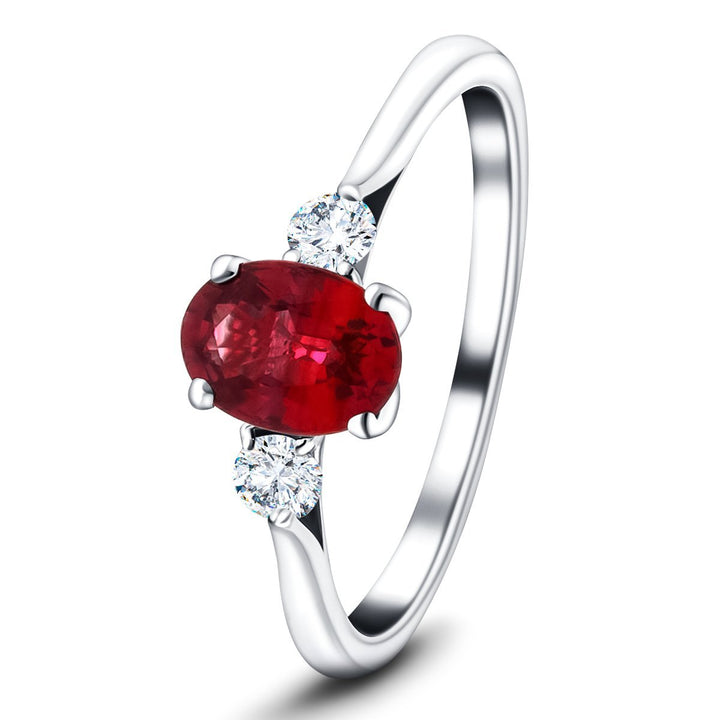
$1,073.00
$1,655.00
Keep your accessories simple, yet elegant, with the addition of this tasteful ring. The durable ruby gemstone will last for years to come, even with everyday wear. Draw the eye when the light hits this brilliant oval-cut stone. The 18… read more
Rose Gold
Rose gold is a beautiful alternative to white or yellow gold. The tone can range from a slightly orange appearance to an almost pink tone. Many wearers love the warmth of the colour. Rose gold is created by alloying pure gold with copper. The reddish tones create a stunning appearance that others will often notice.
Gold Is Forever!
Now that you know more about gold types and colours you can be confident about your gold buying choices. Gold can be pricey; that is normal for rare and precious items, and gold is a precious commodity! The price you pay for your gold jewellery will depend upon the market price of gold at the time you buy, the weight of gold in the jewellery you buy and, of course, the purity of the metal.
18K Rose Gold 0.40ct Diamond Treble Clef Music Pendant Necklace
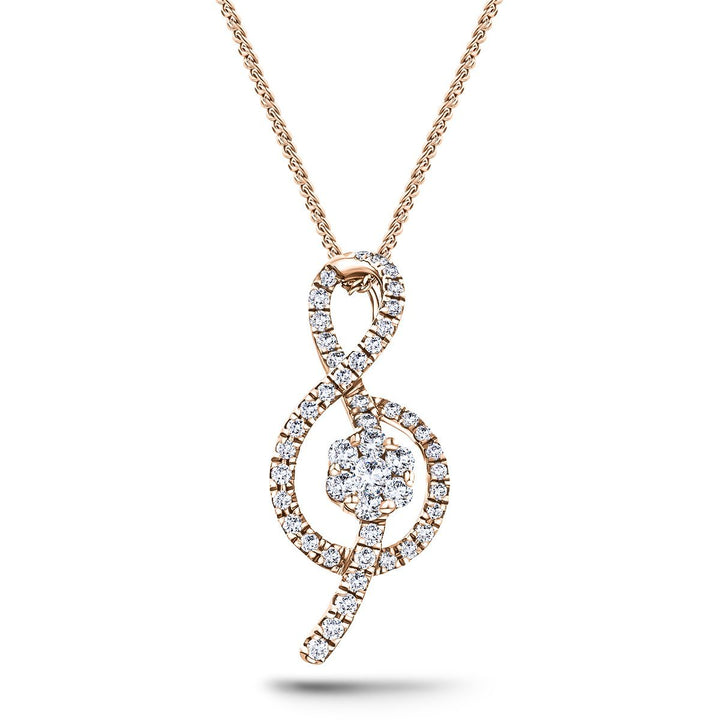
$1,032.00
$1,573.00
This intricately crafted treble clef pendant necklace in romantic 18k rose gold is a sparkling musical delight for the musician or music fan in your life. The 0.45ct of perfectly hand-cut diamonds with a total on the pendant are secured… read more
Fortunately, gold, because it does not rust (oxidise), lasts forever. It is possible that the next piece of gold jewellery you buy has gold in it from jewellery made hundreds of years ago! It can be sold for recycling by melting down to create new jewellery almost indefinitely into the future.
The gold jewellery you buy is not just a fashion item but can be worn and enjoyed for decades to come and passed down through the generations into the future.
Your All Diamond jewellery can become a family heirloom loved by your children and grandchildren just as much as you love it today!
